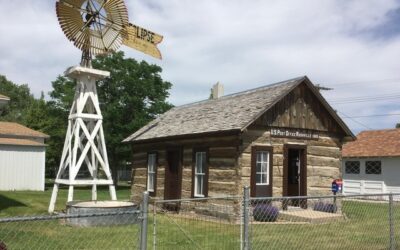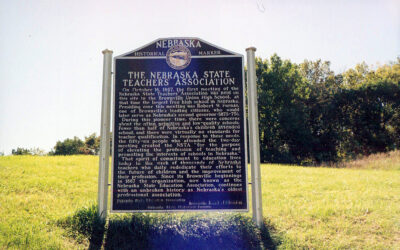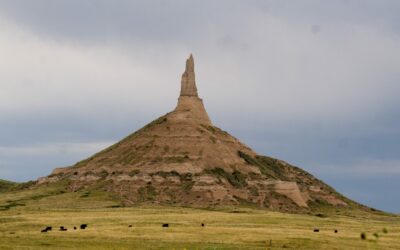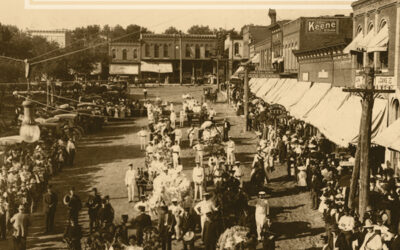The area designated by Congress in 1854 as the Nebraska Territory was organized in part to clear the way for the eventual passage of a transcontinental railroad through the Platte Valley. Beginning in the early 1840’s, scores of immigrants headed for Oregon and California had crossed this virgin territory. The majority of them passed through Missouri and Kansas, then followed the south bank of the Platte River over what became known as the Oregon Trail. The Mormons, after wintering near Omaha, blazed a trail westward in 184 7 along the north bank of the Platte.
Hopeful of reducing the mileage to frontier outposts as well as the expense of supplying them, Congress in 1855 appropriated fifty thousand dollars for the construction of a wagon road over the Monon Trail in Nebraska Territory, “connecting New Fort Kearney and a point of the Missouri river, opposite Council Bluffs, Iowa,” a distance of some 180 miles. Captain John H. Dickerson was appointed a supervisor. With the improvement of this route, known as the military road, settlement was encouraged and way stations began to develop.
Steamboats were the earliest means of commercial transportation available to Nebraska settlers. As carriers of newspapers, mail, passengers, and freight, the riverboats provided the best method of communication with the states from spring until winter prior .to the establishment of stage lines and the telegraph. The fact that Omaha, founded in 1854, was located 150 miles north of the western-most railroad connections at St. Joseph precluded its extensive use by the largest freighting company, Russell, Majors & Waddell, which headquartered at Nebraska City. Omaha City did begin to grow, nonetheless, as mail, passenger and express service became established, and it emerged eventually as important outfitting, trading, and transportation center. The discovery of gold in Colorado and Montana created a demand for goods and provided the impetus for developing Omaha and other Missouri River towns into outfitting points and freighting terminals.
The route west from Omaha, the most heavily traveled of all the trails radiating from the town, passed through Papillion, Elkhorn, Fremont, and North Bend, then crossed the Loup Fork River at Columbus. Travelers reached Prairie Creek, Lone Tree, Grand Island, and Mendota, finally nearing Fort Kearny where they forded the Platte River.
Read the full article here.
Note: the word Indian is used instead of Native American as it was the norm at the time.

What Twelfth and Farnam streets in Omaha, Nebraska looked like in 1867.




